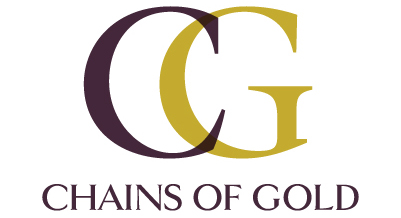All About Gold
One of the oldest elements on earth, people once held the common belief that gold was borne of water and sunlight. This most precious of metals is an infinite icon of love, success and luxury.
We believe jewellery shouldn’t be stored out of sight for posterity. Rather, we want to see it worn each day with pride.
One of the characteristics of pure gold is its softness. In this form it is unsuitable for everyday wear; therefore, it is made more robust by combining (alloying) it with other metals.
Adjusting the alloy-to-gold ratio will impact on the fineness of the finished product; this is known as its carat weight. At Chains of Gold, we stock mainly 9ct gold with a fineness of 375. In other words, 375 out of 1000 parts comprise pure gold.
Yellow Gold
Our love affair with gold can be traced back as far as 2600BC, and yellow gold is the most classically -appealing form, due to its brilliant sheen and natural beauty.
The alloys used most commonly in yellow gold are copper, which provides a red hue; and silver, which emanates a green tone. The comforting warmth synonymous with this type of gold is yielded from a skilled combination of copper, silver and pure gold.
White Gold
Combining pure yellow gold with white metals, such as silver and palladium, leads to the creation of white gold.
This precious metal is part of the platinum family, whose characteristics include its hardness and bright sheen that is immune to tarnishing.
In the final stage of the process, the finished item of jewellery is given a rhodium coating, which provides white gold with its signature vivid white appearance.
The rhodium coating on white gold will eventually erode, to expose a champagne-coloured gold. While the exquisiteness and value of your white gold will remain intact, recoating is an easy process and will ensure the jewellery maintains its new appearance.
At Chains of Gold, we do not offer this re-coating service, but any high street/local jewellers will be happy to oblige.
Rose Gold
As far back as the 19th century, rose gold has been a popular choice; especially in Russia. Representing unity and the elements, Russian wedding rings typically combine white, yellow and rose gold.
In the creation process, yellow gold is alloyed with a small quantity of copper, which gives rose gold its trademark tint. You may also hear this precious metal referred to as pink gold or red gold.
Hallmarking
As is the case for all precious metals, gold jewellery features a hallmark to signify its quality and genuineness.
It is a requirement of the Assay Offices of Great Britain that all jewellery comprising more than 1 gram of gold must be hallmarked.
Furthermore, it is mandatory for the sponsor’s mark, the fineness mark and the Assay Office’s mark to be displayed in the hallmark.
While the sponsor’s mark will vary according to the specific jewellery manufacturer, the remaining two marks are standard for all gold jewellery.
Depending on where in the UK your jewellery was hallmarked, it will take one of the following assay marks:

The fineness mark will be one of the following:
- 375 for 9ct Gold
- 585 for 14ct Gold
- 750 for 18ct Gold
Click here for the official guidance from the British Hallmarking Council
https://www.gov.uk/government/organisations/british-hallmarking-council


